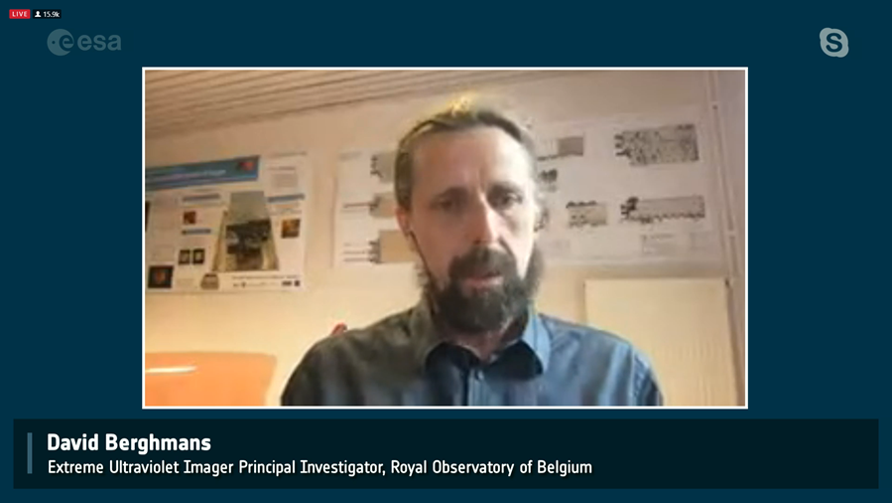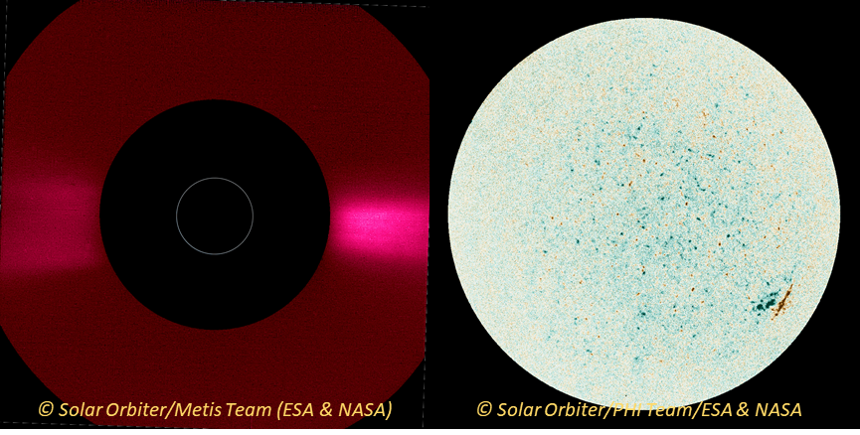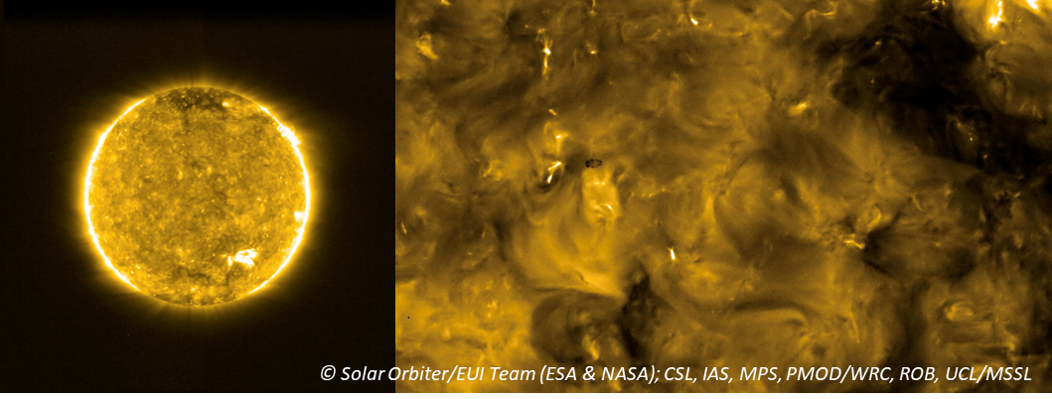During an ESA online press briefing on 16 July, the first images from ESA’s new Sun-observing spacecraft Solar Orbiter have been released. Six prominent project scientists and principal investigators explained the main main goals, findings, and mysteries they hope to solve with "SolO". For the Royal Observatory of Belgium, David Berghmans joined the online panel as he is the principal investigator of the Extreme Ultraviolet Instrument (EUI), the telescope that is making images of the Sun in extreme ultraviolet.

Solar Orbiter, launched on 10 February, completed its commissioning phase in mid-June despite the setbacks the teams faced while commissioning the spacecraft and its instruments amid the COVID-19 pandemic. The first imaging campaign has been a great success. The 10 instruments on board Solar Orbiter are working flawlessly, and together provide a comprehensive view of the Sun and the solar wind. This increases confidence that Solar Orbiter will help answer profound open questions about the Sun, such as how the solar wind is accelerated, how solar eruptions are generated or why the corona (the Sun's outer atmosphere) is so hot.

During its first perihelion (15 June 2020), the point in the spacecraft’s elliptical orbit closest to the Sun, Solar Orbiter got as close as 77 million kilometres from our star’s surface, about half the distance between the Sun and Earth. The spacecraft will eventually make much closer approaches to the Sun. Once in its science phase, which will commence in late 2021, the spacecraft will get as close as 42 million kilometres from the Sun’s surface, closer than the planet Mercury. This will obviously improve the resolution of the images, and as experience in image processing and the use of the spacecraft is gained, may even further increase this resolution by a factor of two.
Imagery obtained with the EUI during the first perihelion shows already tantalizing results. The Sun remains very dynamic even on very small scales. Scientists are running short of all the new features they have been discovering, and started to create a whole new vocabulary. One of the new words is "campfire", omnipresent miniature eruptions that could be contributing to the high temperatures of the solar corona and the origin of the solar wind. This is of course just one theory, and scientists are eager to see which of these theories holds.

Solar Orbiter will also collaborate with other prominent missions such as the Parker Solar Probe (PSP), which can approach the Sun to just a few millions kilometres but as such can't take direct solar pictures due to the scorching heat, and BepiColombo, Europe's first mission to the planet Mercury. This teaming up should even further improve science results by the combination of remote and in situ observations from the different spacecraft. The scientists also emphasized that over the years to come, Solar Orbiter's orbit will be gradually modified such that the spacecraft will get a better view of the Sun's poles. Questions scientists hope to get answered then is how the magnetic solar dynamo actually works, or how the polar coronal holes drive the solar wind and the heliospheric bubble.
More information and imagery can be found on the dedicated websites from ESA and ROB/SIDC.





